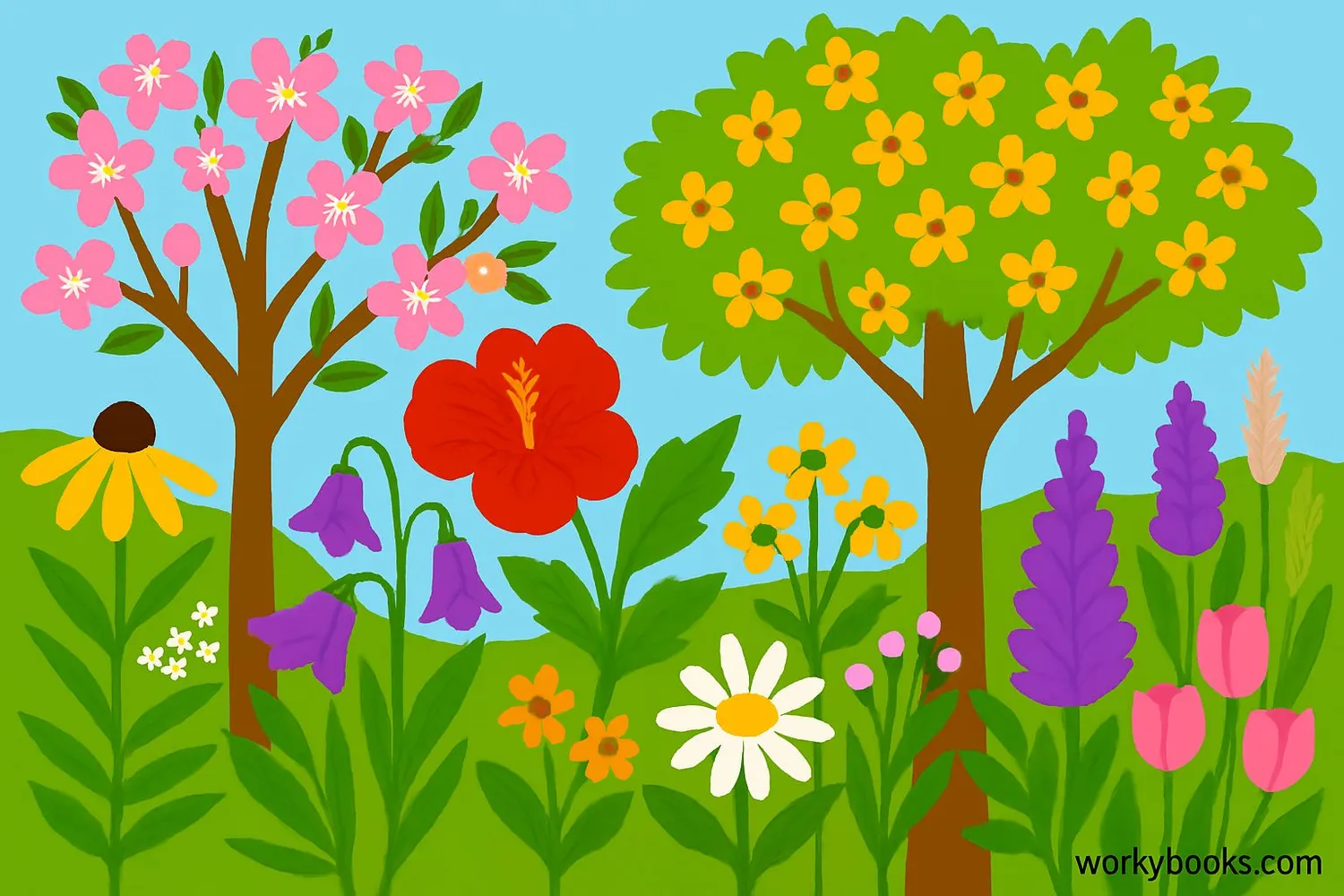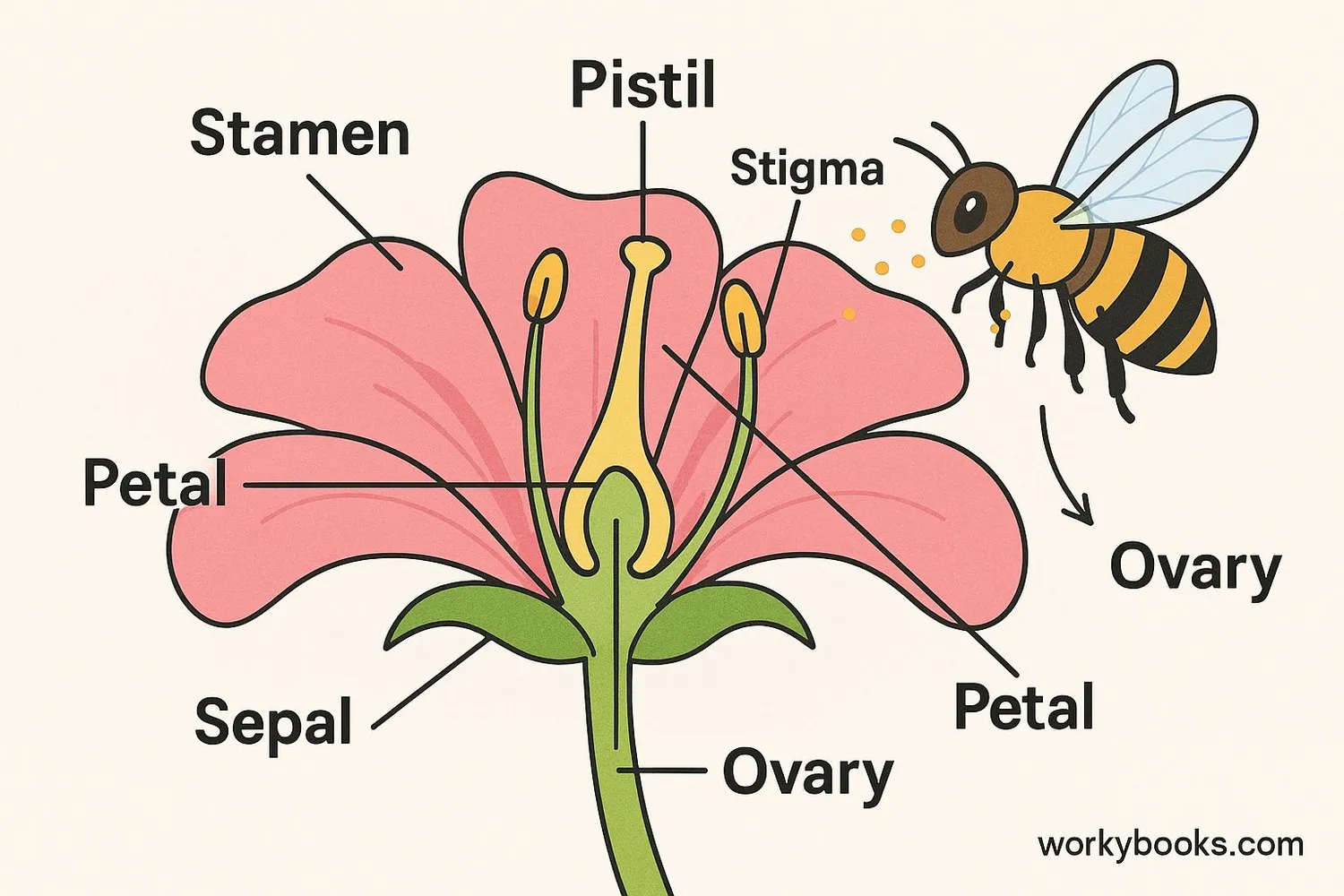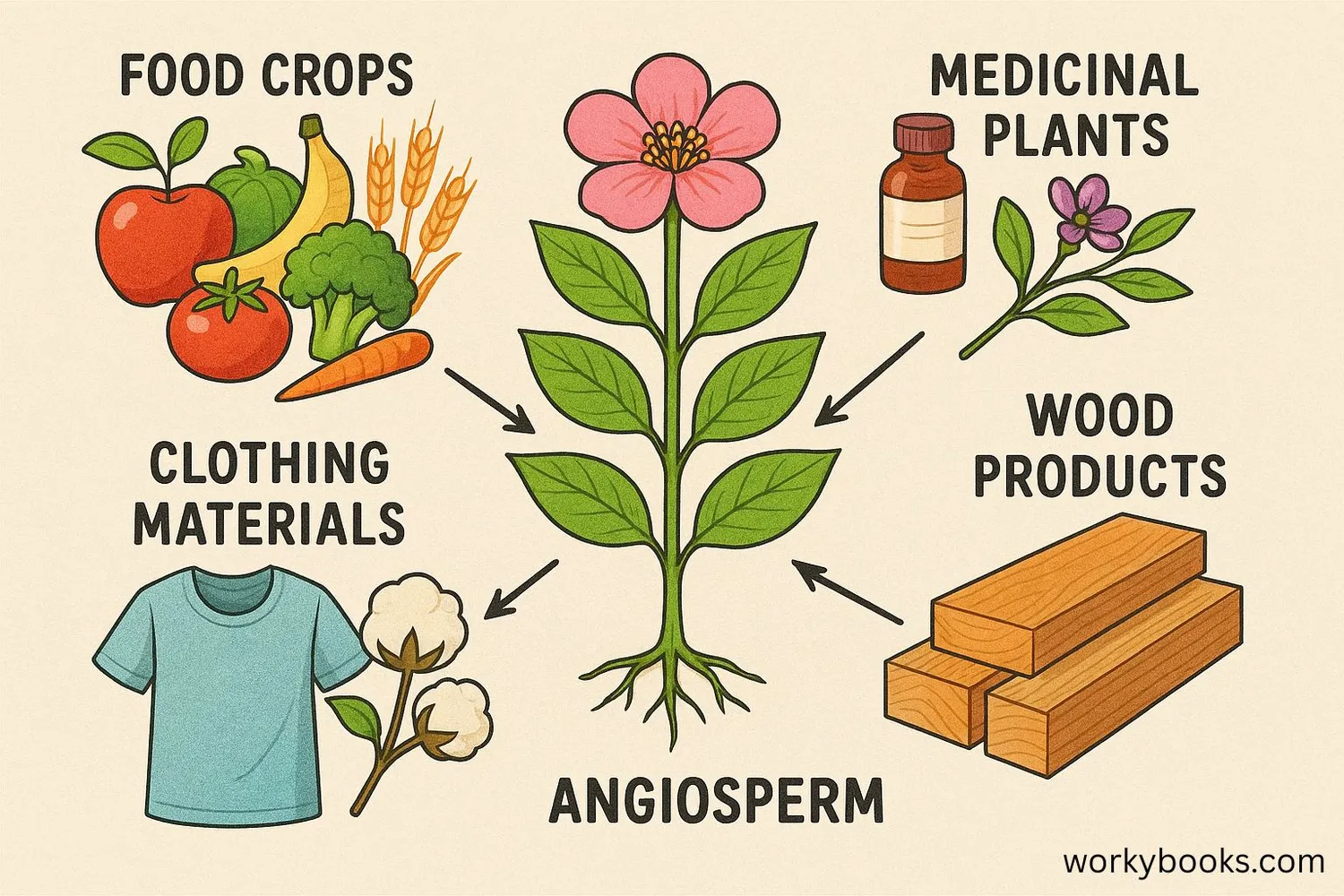Angiosperms - Definition, Examples, Quiz, FAQ, Trivia
Discover how flowering plants grow, reproduce, and support life on Earth!
What are Angiosperms?

Angiosperms are flowering plants that produce seeds enclosed in fruits. They are the most diverse group of plants on Earth, with over 300,000 known species! The word "angiosperm" comes from Greek words meaning "enclosed seed."
These amazing plants come in all shapes and sizes—from tiny duckweed floating on water to giant oak trees that tower above the forest. What all angiosperms have in common is that they produce flowers at some point in their life cycle, and their seeds develop inside a protective ovary that becomes a fruit.
Plant Fact!
About 80% of all living plant species are angiosperms! They dominate most land environments except for the coldest Arctic and highest mountain regions.
Flowers
All angiosperms produce flowers, which are their reproductive structures
Fruits
Seeds develop inside an ovary that matures into a fruit
Two Groups
Monocots (like grasses) and dicots (like beans)
How Angiosperms Reproduce

Angiosperms have a special way of reproducing through flowers. Flowers contain both male and female reproductive parts. The male part is called the stamen, which produces pollen. The female part is called the pistil, which contains the ovary where seeds develop.
Pollination happens when pollen moves from the stamen to the pistil. This can occur through wind, water, or animal pollinators like bees, birds, and bats. After pollination, fertilization occurs, and the ovary begins to develop into a fruit that protects the seeds.
Flower Formation
Plant produces flowers with reproductive structures
Pollination
Pollen is transferred to the pistil
Fertilization
Pollen joins with ovules in the ovary
Fruit Development
Ovary grows into a fruit containing seeds
Seed Dispersal
Fruits help spread seeds to new locations
Pollination Partners!
Some flowers have evolved special shapes, colors, and scents to attract specific pollinators. For example, hummingbird-pollinated flowers are often red and tubular.
Why Angiosperms are Important

Angiosperms are incredibly important to life on Earth! They provide food, shelter, oxygen, and many other resources that humans and animals depend on for survival.
Food Source
Most human food comes from angiosperms: fruits, vegetables, grains, nuts
Medicine
Many medicines are derived from plant compounds
Oxygen Production
Through photosynthesis, they produce oxygen we breathe
Without angiosperms, there would be no:
• Most foods we eat daily
• Many medicines that keep us healthy
• Materials like wood, cotton, and paper
• Beautiful flowers and landscapes
• Habitat for countless animal species
Angiosperms also play a crucial role in ecosystems by preventing soil erosion, regulating water cycles, and providing habitats for animals.
Angiosperms Quiz
Test your knowledge about flowering plants with this quiz! Answer all 5 questions to see how much you've learned.
Frequently Asked Questions
Here are answers to some common questions about angiosperms:
Fun Plant Trivia
Discover some amazing facts about angiosperms!
Size Extremes
The smallest angiosperm is duckweed, which can be less than 1mm wide. The largest is the Australian mountain ash tree, which can grow over 100 meters (330 feet) tall!
Food Sources
About 70% of the food humans eat comes from just 12 species of angiosperms! These include rice, wheat, corn, potatoes, and bananas.
Flower Power
The titan arum produces the largest flower in the world, growing over 3 meters (10 feet) tall! Unfortunately, it smells like rotting flesh to attract its pollinators.
Water Plants
Some angiosperms have adapted to live in water. Sea grasses flower underwater, and their pollen is carried by water currents instead of air or animals.


